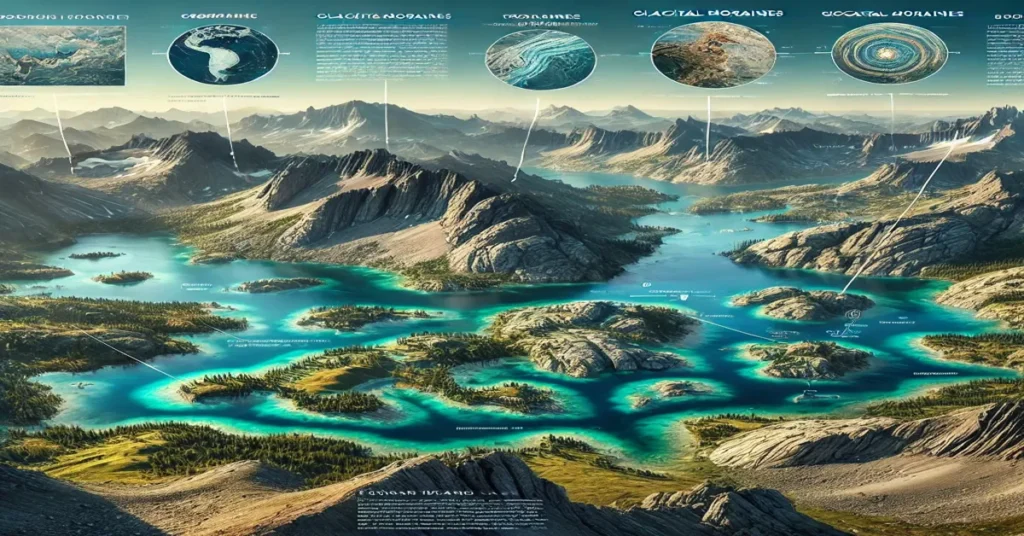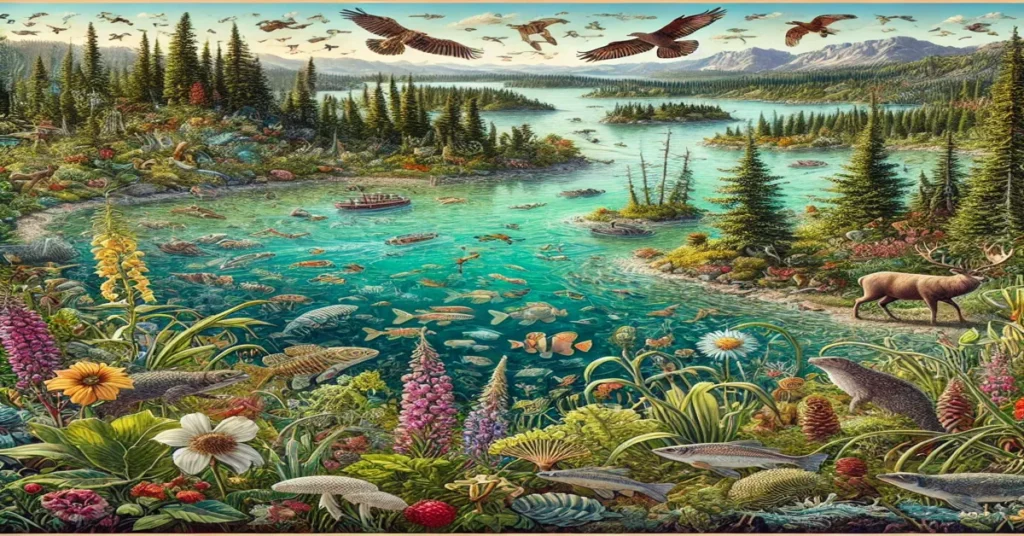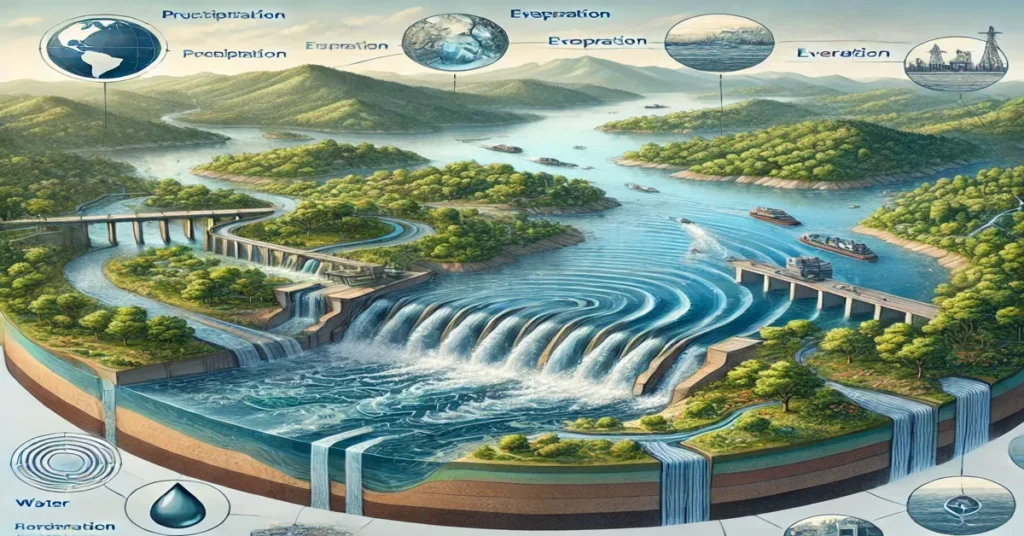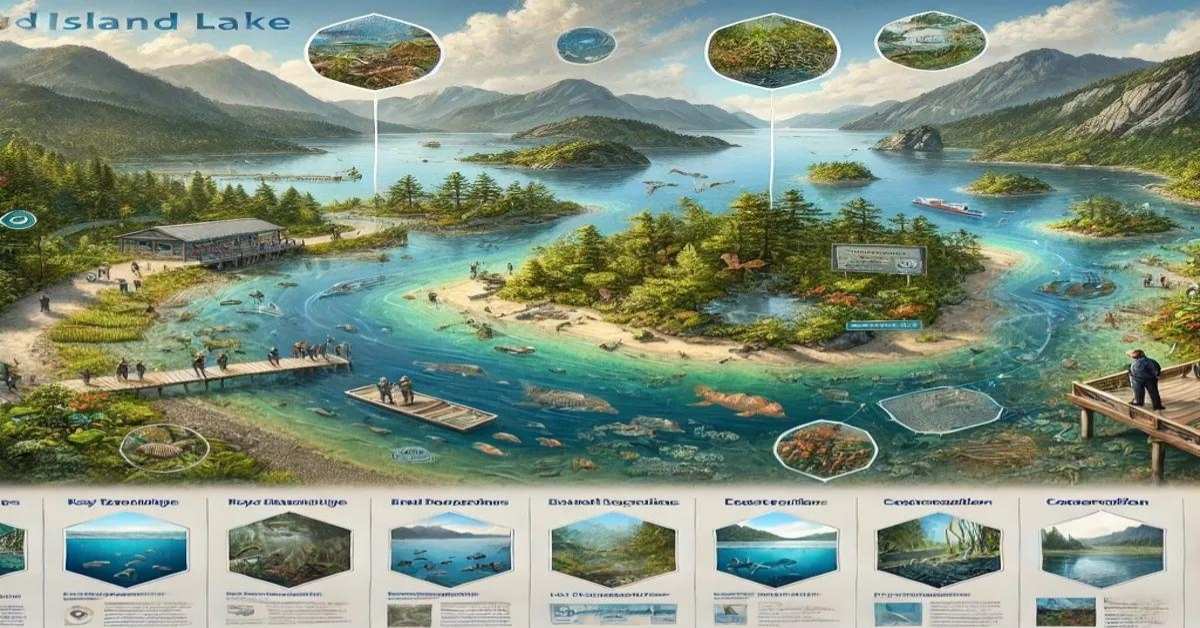Introduction
Thousand Island Lake is a stunning alpine lake located in the Ansel Adams Wilderness of the Sierra Nevada mountain range in California. Its name derives from the numerous small islands that dot the lake’s surface, creating a picturesque scene that attracts outdoor enthusiasts, photographers, and environmentalists alike. Set against the backdrop of Banner Peak, Thousand Island Lake is not only a breathtaking destination but also a critical ecosystem that supports a variety of flora and fauna, all while playing a vital role in the regional watershed.
This article delves into the environmental niche of Thousand Island Lake, exploring its formation, surrounding ecosystems, biodiversity, role in local water systems, and the environmental challenges it faces. We will also highlight the importance of conservation efforts to preserve this natural wonder for future generations. Through this exploration, we aim to offer a comprehensive understanding of the ecological significance of Thousand Island Lake and its place in the broader environmental landscape of the Sierra Nevada.
1. Geographic and Geologic Overview of Thousand Island Lake
Thousand Island Lake is situated at an elevation of approximately 9,833 feet (2,997 meters) in the eastern Sierra Nevada. Its location in the Ansel Adams Wilderness places it within the Inyo and Sierra National Forests, offering protection to the surrounding environment and ensuring that the area remains largely untouched by human development.

1.1. Geological Formation
Thousand Island Lake is a glacial lake, formed during the last Ice Age when glaciers carved out deep valleys in the Sierra Nevada. As the glaciers retreated, they left behind a series of moraines (glacial debris) that acted as natural dams, creating the lakes that now dot the Sierra high country, including Thousand Island Lake.
- Glacial Carving: The lake was formed by the movement of glaciers that scraped out a basin, which later filled with water from melting snow and ice.
- Island Formation: The islands within Thousand Island Lake were created by the glacial debris left behind. Over time, these islands have become stable, supporting various plant species and serving as habitats for birds and other wildlife.
1.2. Climatic Conditions
Thousand Island Lake experiences a subalpine climate, characterized by cold, snowy winters and cool, dry summers. The high elevation of the lake means that snow can remain on the ground well into summer, and temperatures at night can drop below freezing, even during the warmer months.
- Snowmelt and Hydrology: The primary source of water for Thousand Island Lake comes from snowmelt, which fills the lake and its surrounding wetlands during the spring and early summer. This seasonal influx of water plays a critical role in maintaining the lake’s water levels and supporting the surrounding ecosystems.
2. Biodiversity and Ecosystems Around Thousand Island Lake
Thousand Island Lake and its surrounding areas host a diverse range of plant and animal species, many of which are specially adapted to survive in the harsh conditions of the high Sierra.

2.1. Flora of the Region
The vegetation around Thousand Island Lake is typical of alpine and subalpine ecosystems, with a combination of hardy, low-growing plants that can withstand the cold temperatures and short growing season.
- Alpine Grasses and Shrubs: The slopes around the lake are covered with alpine grasses, sedges, and small shrubs like willow (Salix spp.) and mountain heather (Phyllodoce spp.). These plants are well-adapted to the harsh winds and freezing temperatures of the high-altitude environment.
- Wildflowers: During the brief summer, the area comes alive with wildflowers such as lupine, Indian paintbrush, and alpine buttercups. These colorful blooms not only add to the scenic beauty of the lake but also provide food and habitat for pollinators such as bees and butterflies.
- Trees: While the immediate vicinity of the lake is dominated by low-lying vegetation, higher up on the slopes, scattered stands of whitebark pine (Pinus albicaulis) and lodgepole pine (Pinus contorta) can be found. These hardy trees are capable of surviving in rocky, nutrient-poor soils and play an important role in stabilizing the soil and preventing erosion.
2.2. Fauna of the Region
Thousand Island Lake is home to a variety of wildlife, ranging from small mammals to large predators, as well as numerous bird species and aquatic life.
- Mammals: The rugged terrain and sparse vegetation of the high Sierra make it challenging for large mammals to thrive, but smaller species like marmots, pikas, and ground squirrels are common around Thousand Island Lake. These animals are well-adapted to the alpine environment and often forage on grasses, seeds, and berries.
- Birds: The islands in the lake provide nesting sites for a variety of bird species, including waterfowl like ducks and geese, as well as raptors like ospreys and peregrine falcons. These birds rely on the lake for food, nesting sites, and shelter during their seasonal migrations.
- Fish and Aquatic Life: Thousand Island Lake is known for its population of rainbow trout, which were introduced to the lake as part of a fish-stocking program. These fish play an important role in the lake’s food web, providing food for birds and other predators. In addition to fish, the lake supports populations of aquatic insects and invertebrates, which form the base of the food chain.
3. Hydrological Importance of Thousand Island Lake
As part of the larger Sierra Nevada watershed, Thousand Island Lake plays a critical role in water regulation and distribution in the region. The lake serves as a natural reservoir, storing snowmelt and gradually releasing it into downstream water systems throughout the summer months.

3.1. Source of the San Joaquin River
Thousand Island Lake is one of the primary headwaters of the San Joaquin River, which flows through California’s Central Valley before emptying into the San Francisco Bay. The snowmelt that feeds Thousand Island Lake eventually makes its way into the river, providing essential water resources for agricultural, industrial, and residential use in the region.
- Water Storage: The lake acts as a natural storage system, capturing snowmelt and releasing it slowly into the river system. This gradual release helps regulate water flow during the dry summer months and prevents flooding during periods of heavy snowmelt.
3.2. Wetlands and Riparian Zones
The area surrounding Thousand Island Lake includes several wetlands and riparian zones, which provide critical habitat for wildlife and contribute to the overall health of the ecosystem.
- Wetland Ecosystems: The wetlands around the lake act as natural filters, removing pollutants and excess nutrients from the water before it enters the lake. These wetlands also provide habitat for amphibians, insects, and birds, supporting a diverse range of species.
- Riparian Buffers: The riparian zones along the lake’s shores help stabilize the soil, reduce erosion, and maintain water quality. These areas are essential for preventing sediment from entering the lake, which could otherwise degrade the aquatic habitat.
4. Environmental Challenges Facing Thousand Island Lake
Despite its remote location and protected status, Thousand Island Lake faces several environmental challenges that threaten its delicate ecosystems.

4.1. Climate Change
One of the most significant threats to Thousand Island Lake is climate change, which is altering the patterns of snowmelt, water availability, and temperature in the Sierra Nevada.
- Reduced Snowpack: Warmer winters and reduced snowfall are leading to smaller snowpacks in the Sierra, which means less water is available to feed the lake during the summer. This could result in lower water levels, which would affect the lake’s aquatic ecosystems and its ability to serve as a reservoir for the San Joaquin River.
- Changing Plant and Animal Ranges: As temperatures rise, many plant and animal species are shifting their ranges to higher elevations. This could lead to changes in the composition of the ecosystems around Thousand Island Lake, with some species becoming more dominant while others may be forced out of the area.
4.2. Human Impact and Recreation
Thousand Island Lake is a popular destination for hikers, backpackers, and anglers, which has led to increased foot traffic and camping in the area. While responsible recreation is encouraged, the influx of visitors can have negative impacts on the environment.
- Erosion and Trail Damage: The trails leading to Thousand Island Lake are subject to heavy use, which can cause erosion and damage to the surrounding vegetation. In some areas, the trampling of delicate alpine plants has resulted in the loss of vegetation cover, which makes the soil more prone to erosion.
- Litter and Waste: Although most visitors follow Leave No Trace principles, litter and human waste can still be a problem around the lake. Improper disposal of waste can contaminate the water and harm wildlife.
4.3. Invasive Species
The introduction of non-native species, particularly fish, can have a profound impact on the lake’s ecosystems. While rainbow trout have been a popular species for anglers, their presence may disrupt the balance of native aquatic life.
- Impact on Native Species: Stocking non-native fish can alter the food web by preying on native species or competing for resources. This can have ripple effects throughout the ecosystem, affecting everything from aquatic insects to the birds that rely on the lake for food.
5. Conservation Efforts and Future Directions
Recognizing the ecological importance of Thousand Island Lake, numerous conservation efforts are in place to protect the area from further environmental degradation. These initiatives aim to preserve the lake’s ecosystems, maintain water quality, and ensure that the lake remains a pristine destination for future generations.

5.1. Wilderness Protection
Thousand Island Lake is located within the Ansel Adams Wilderness, which provides a high level of protection from development and resource extraction. The Wilderness Act of 1964 ensures that this area remains undeveloped and free from human structures, roads, and motorized vehicles, helping to preserve the natural landscape and ecosystems. By designating the area as wilderness, human activities are limited, allowing the environment to maintain its natural processes with minimal interference.
5.2. Leave No Trace Principles and Sustainable Tourism
One of the key strategies for conserving Thousand Island Lake and its surrounding areas is promoting sustainable tourism through education and the implementation of Leave No Trace principles. These guidelines help reduce the environmental impact of visitors by encouraging behaviors that protect the delicate alpine ecosystem.
- Education Programs: Outdoor organizations, park services, and local guides emphasize the importance of minimizing human impact on the environment. Programs aimed at hikers, campers, and anglers focus on responsible recreation, waste disposal, and trail stewardship.
- Camping Restrictions: To reduce the environmental footprint of camping around Thousand Island Lake, certain areas are designated for overnight use, with regulations in place to prevent overuse. Campers are encouraged to use established campsites and to avoid sensitive areas like wetlands or riparian zones.
- Pack In, Pack Out: Visitors are expected to carry out all of their trash, waste, and any other materials they bring into the wilderness area. This ensures that litter does not accumulate, protecting the wildlife and water quality of the lake.
5.3. Invasive Species Management
To protect the aquatic ecosystems of Thousand Island Lake, management efforts are being put in place to control and monitor the introduction of invasive species, particularly fish. These efforts aim to maintain the balance of native species and preserve the health of the lake’s ecosystem.
- Non-Native Fish Removal: In some areas, there are programs to remove or limit the introduction of non-native fish species that disrupt the natural balance of the ecosystem. By removing these species, conservationists hope to restore the natural food web and support the native aquatic organisms that have historically thrived in the lake.
- Aquatic Habitat Restoration: Efforts are also being made to restore the natural habitat of the lake, particularly for native species such as amphibians and aquatic invertebrates. By creating more favorable conditions for these species, their populations can recover, which in turn supports the overall biodiversity of the lake.
5.4. Climate Change Mitigation and Research
Addressing the impacts of climate change on Thousand Island Lake requires ongoing research and the implementation of adaptive management strategies. Scientists are studying how changing weather patterns, snowpack levels, and temperatures are affecting the lake’s water levels, ecosystems, and species composition.
- Monitoring Programs: Long-term monitoring programs have been established to track changes in water quality, wildlife populations, and vegetation around Thousand Island Lake. By collecting data over time, researchers can identify trends and implement measures to mitigate the negative impacts of climate change.
- Restoration Projects: Restoration initiatives aimed at protecting riparian zones, wetlands, and upland areas are critical in ensuring the resilience of the ecosystems surrounding the lake. These projects often involve planting native species, stabilizing soil to prevent erosion, and rehabilitating areas that have been damaged by human activity or climate change.
- Public Involvement: Engaging local communities and outdoor enthusiasts in conservation efforts is essential for the long-term protection of Thousand Island Lake. Citizen science programs, where volunteers assist with data collection and monitoring, are valuable tools in expanding the capacity for research and fostering a sense of stewardship among the public.
6. The Future of Thousand Island Lake: Challenges and Opportunities
The future of Thousand Island Lake depends on a delicate balance between promoting responsible tourism and maintaining the ecological health of the region. While challenges such as climate change and human impact continue to threaten this pristine environment, opportunities for conservation, research, and sustainable management offer hope for the preservation of this unique ecosystem.

6.1. Balancing Tourism and Conservation
As Thousand Island Lake grows in popularity as a destination for outdoor recreation, managing the influx of visitors while protecting the environment becomes increasingly important. Developing strategies to limit the impact of tourism will be critical in ensuring the long-term sustainability of the lake.
- Limiting Visitor Numbers: One possible solution to reduce the environmental pressure on the area is to implement a permit system that limits the number of visitors allowed in the wilderness area at any given time. This would help prevent overcrowding and reduce the overall footprint of human activity.
- Infrastructure Development: Minimal but strategically placed infrastructure, such as designated campsites, boardwalks, and trail reinforcements, can help concentrate human activity in less sensitive areas, reducing the damage to fragile ecosystems.
6.2. Ongoing Conservation Funding
Securing long-term funding for conservation efforts is essential to maintain the health of Thousand Island Lake’s ecosystems. Government support, private donations, and partnerships with conservation organizations can provide the resources needed for research, habitat restoration, and invasive species management.
- Grants and Partnerships: Government agencies, conservation groups, and private foundations often collaborate to fund large-scale conservation projects. By combining resources, these groups can ensure that efforts to protect Thousand Island Lake are both effective and sustainable.
- Ecotourism Revenue: Responsible ecotourism can provide an economic incentive to protect Thousand Island Lake while offering visitors a chance to experience its beauty. By promoting environmentally friendly tourism practices and investing in conservation education, the area can benefit from tourism without compromising its ecological integrity.
6.3. Education and Awareness
Raising awareness about the importance of conserving Thousand Island Lake and its surrounding ecosystems is key to garnering support for ongoing protection efforts. Public outreach campaigns, educational programs, and partnerships with schools and universities can help foster a deeper understanding of the environmental issues facing the lake.
- Environmental Education Programs: Schools and universities can play a crucial role in educating the next generation about the importance of preserving places like Thousand Island Lake. Field trips, outdoor education programs, and conservation-focused curricula can inspire students to take an active role in protecting natural areas.
- Public Awareness Campaigns: By using social media, local events, and public information campaigns, organizations can reach a broader audience and promote awareness about the environmental challenges facing Thousand Island Lake. Encouraging responsible recreation and support for conservation initiatives can lead to greater community involvement in protecting this vital ecosystem.
Conclusion: Preserving the Natural Beauty of Thousand Island Lake
Thousand Island Lake is more than just a beautiful alpine destination—it is an essential component of the Sierra Nevada’s complex and fragile ecosystems. Its pristine waters, diverse wildlife, and unique plant life make it an irreplaceable natural resource that requires careful management and ongoing conservation efforts.
As climate change, human impact, and environmental challenges continue to pose threats to Thousand Island Lake, it is crucial to adopt sustainable practices that balance tourism with ecological preservation. By supporting conservation initiatives, promoting responsible recreation, and continuing scientific research, we can ensure that Thousand Island Lake remains a sanctuary for wildlife and a source of inspiration for generations to come.
Through collective action and stewardship, Thousand Island Lake can continue to thrive as a vital environmental niche, a haven for biodiversity, and a cherished natural wonder in the heart of the Sierra Nevada.
Read More: Butte Valley National: An Exploration of Ecological Significance and Conservation Efforts

